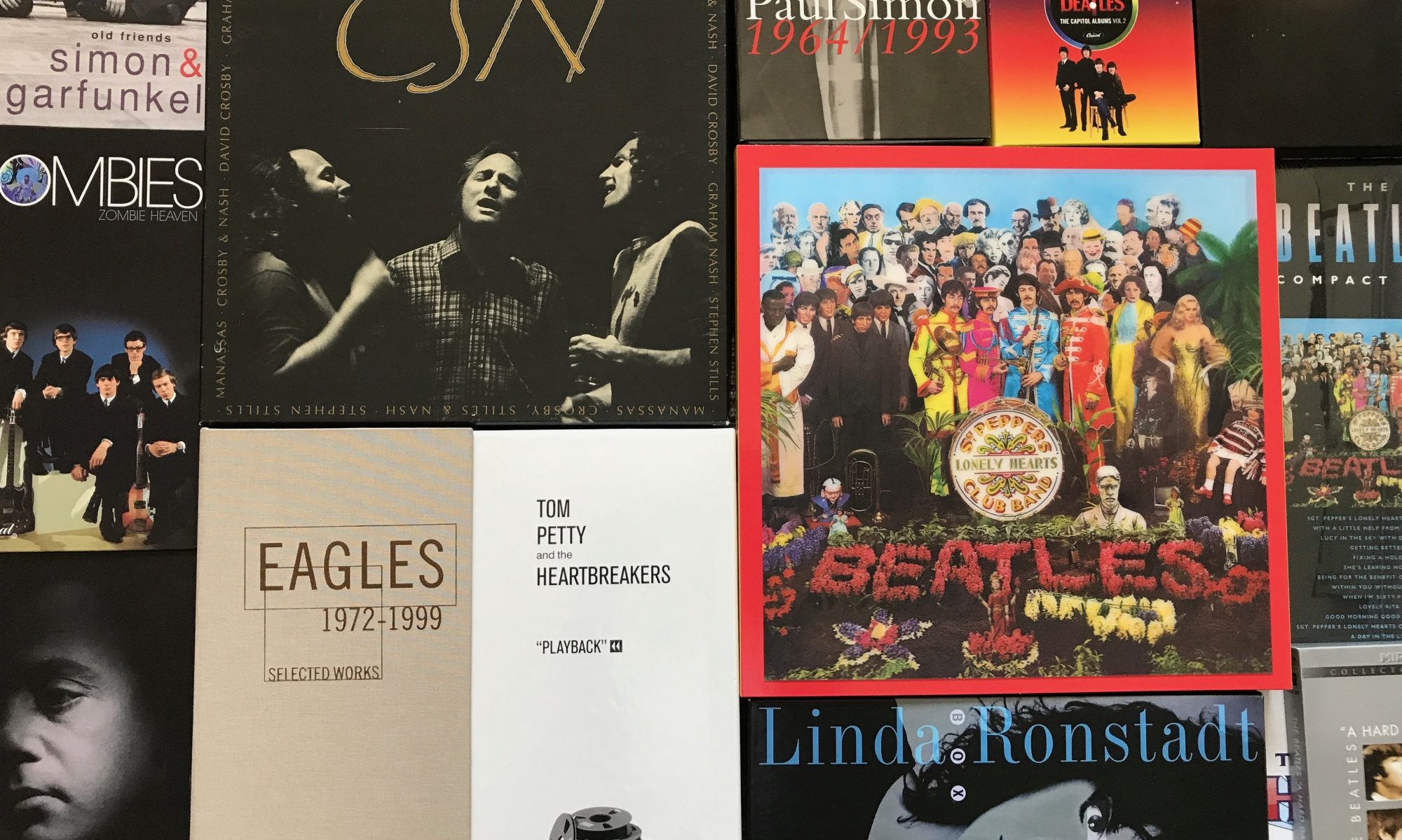Any article written about Concept Albums struggles to clarify which albums fit the term. Sometimes they include albums by Frank Sinatra and The Beach Boys.
In the 50s, Sinatra put together love songs that fit a certain feeling, and in the early 60s, The Beach Boys had albums about cars and/or surfing.
Some albums from the mid-sixties were so good and innovative that people sometimes include them in the concept album discussion, even though they weren’t really built on specific concepts. However, they did help begin a boom in albums that grew in the 70s and 80s.
The album that started the concept album discussion in the 60s is Sgt. Pepper’s Lonely Hearts Club Band.
If you were a music collector at that time, you know the release of Sgt. Pepper was a seismic event in recording history. There had never been a mainstream album that combined such innovation in song styles and use of the recording studio. There were no gaps between the tracks, and some of them were musically connected. It was the first album to have all of the lyrics printed right on the cover.
Sgt. Pepper certainly started as a concept album. Paul McCartney thought that if The Beatles recorded as Sgt. Pepper’s Lonely Hearts Club Band, they could explore new musical ideas. Though the album started that way, even The Beatles admitted the idea wasn’t fully realized. Would Sgt. Pepper’s Band really have played “Within You Without You”?
What we need is a clear definition for a concept album. Albums like those by Frank Sinatra, The Beach Boys and many others are more accurately described as theme albums. In order to sort out theme albums from concept albums, we could apply these three straightforward measurements.
- A starting concept
- Original songs written specifically for the album’s concept
- Songs that together form a complete work of art (rather than songs that just fit a theme)
This stronger definition eliminates albums like those of Sinatra, who chose songs from the American Songbook, rather than having songs written specifically for the album. As great as some of The Beach Boys songs are, they didn’t really form a greater whole. It’s just that their early songs were about surfing, cars, and girls. Vocalist Mike Love said they didn’t use concepts in making their albums.
It’s likely the first concept album was the one released in 1940 by Woody Guthrie.
An “album” back then was like a photograph book with 78 RPM records placed in paper holders between the cardboard covers. Those 10-inch records only had one song on each side, so the complete album was two album-books with three records each, for a total of 12 songs. Guthrie’s Dust Bowl Ballads fits the stronger definition of a concept album.
As far as Rock albums go, there’s an album from a little later in the same year as Sgt. Pepper (1967) that is obviously a concept album.
The songs on Days Of Future Passed by The Moody Blues take us through a compete day. Song titles include “Dawn Is A Feeling”, “Tuesday Afternoon”, and “Nights In White Satin”. All songs are original, and are interconnected with orchestral instrumental links written from the melodies of the songs. Of the albums that were successful enough to at least make the Top 100 of Billboard’s album chart (“Days” hit #3), this may be the first Rock concept album (if the clearer definition is applied).
The other 1960s concept album that really made a big splash is Tommy by The Who (from 1969).
Tommy was labeled a “Rock Opera” by songwriter/guitarist Pete Townshend who wrote nearly all of it. The album is a 2-record set that tells the life story of a “deaf, dumb and blind kid” who’s also a “Pinball Wizard”.
The innovation of albums in the 60s pushed the art form to a higher level, including a greater use of concepts.







